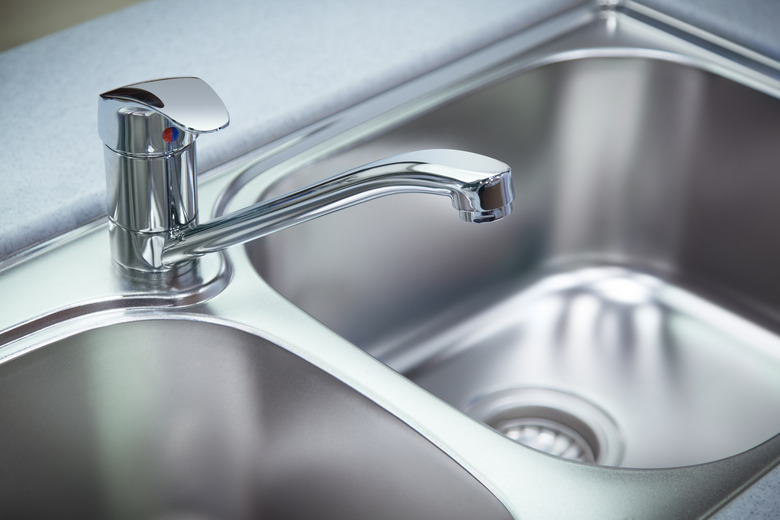How To Repair A Peerless Faucet
Peerless, Delta and Brizo are different faucet brands, but all are owned by Masco Corporation, which is the world's largest faucet manufacturer. Peerless faucets represent the low end of Masco's faucet line, and Peerless faucet reviews, including the one from Starcraft Custom Builders, are generally lukewarm due to their predominantly plastic construction and utilitarian appearance. However, what they lack in style, they make up in design simplicity and repairability, and they are readily available at Lowes and other home supply outlets.
Peerless Faucet Parts Have Two Basic Valve Styles
Peerless Faucet Parts Have Two Basic Valve Styles
Peerless faucets are backed by Delta, a more prominent brand. This could account for the large number of ball-valve models available, as ball valves are a feature of Delta faucets. Besides ball valves, a significant number of Peerless faucets have cartridge valves, particularly double-handled widespread models and tub-and-shower faucets.
When either type of faucet leaks or otherwise malfunctions, the culprits are usually one or more worn rubber parts inside the valve housing. You can usually purchase replacement Peerless faucet parts, including balls, cartridges, gaskets, O-rings and springs, from any outlet that sells the faucets, as well as most hardware stores and plumbing supply outlets. One of the advantages of choosing a budget faucet, such as a Peerless, is the ready availability of such parts, which come in model-specific repair kits,. And if your Peerless faucet is leaking, you'll probably need one of these kits.
How to Disassemble and Repair a Leaking Peerless Faucet
How to Disassemble and Repair a Leaking Peerless Faucet
Whether your Peerless faucet has a ball valve or cartridge valve, the disassembly procedure doesn't change much.
First, turn off the water. Then, unscrew and remove the handle, using a hex wrench or Phillips screwdriver. Unscrew the retaining nut holding the valve, using locking pliers or a wrench. If your faucet has a ball valve, you first have to unscrew and remove the dome-shaped top of the valve housing, which you can usually do by hand.
Remove the valve by grasping the valve stem from which you removed the handle and lift it out. Remove any gaskets from the valve seat by prying them out with a screwdriver. These are likely to include springs, especially when repairing a ball-valve faucet, so don't forget to remove those if they don't come out with the gaskets.
Once you have the parts in hand, you can inspect them to decide which ones need replacing. In most cases, it's best to replace everything, including the ball or cartridge. The parts aren't expensive, and replacing all of them, especially the gaskets, O-rings and springs, is the surest way to guarantee a successful repair.
Some Helpful Tips
Some Helpful Tips
If you're not getting the flow you expect from the faucet, the aerator is the most likely culprit. A Peerless faucet aerator, like that of other models, has a screen that eventually clogs with limescale and other debris. You can restore flow by unscrewing the aerator, backflushing it under the faucet or, if necessary, soaking it overnight in vinegar to dissolve the scale.
Scale can also clog the valve, so if cleaning the aerator doesn't work, try removing the valve and soaking it in vinegar. If the faucet has a cartridge valve, and the valve is clogged with limescale, you may have a hard time removing it. You can purchase a fairly inexpensive cartridge puller, which works like a corkscrew, to remove stuck cartridges.
Finally, if the faucet is leaking from the handle, you can usually stop the leak by tightening the valve retaining nut. This doesn't involve removing the valve, so you don't have to turn off the water to make this repair.
